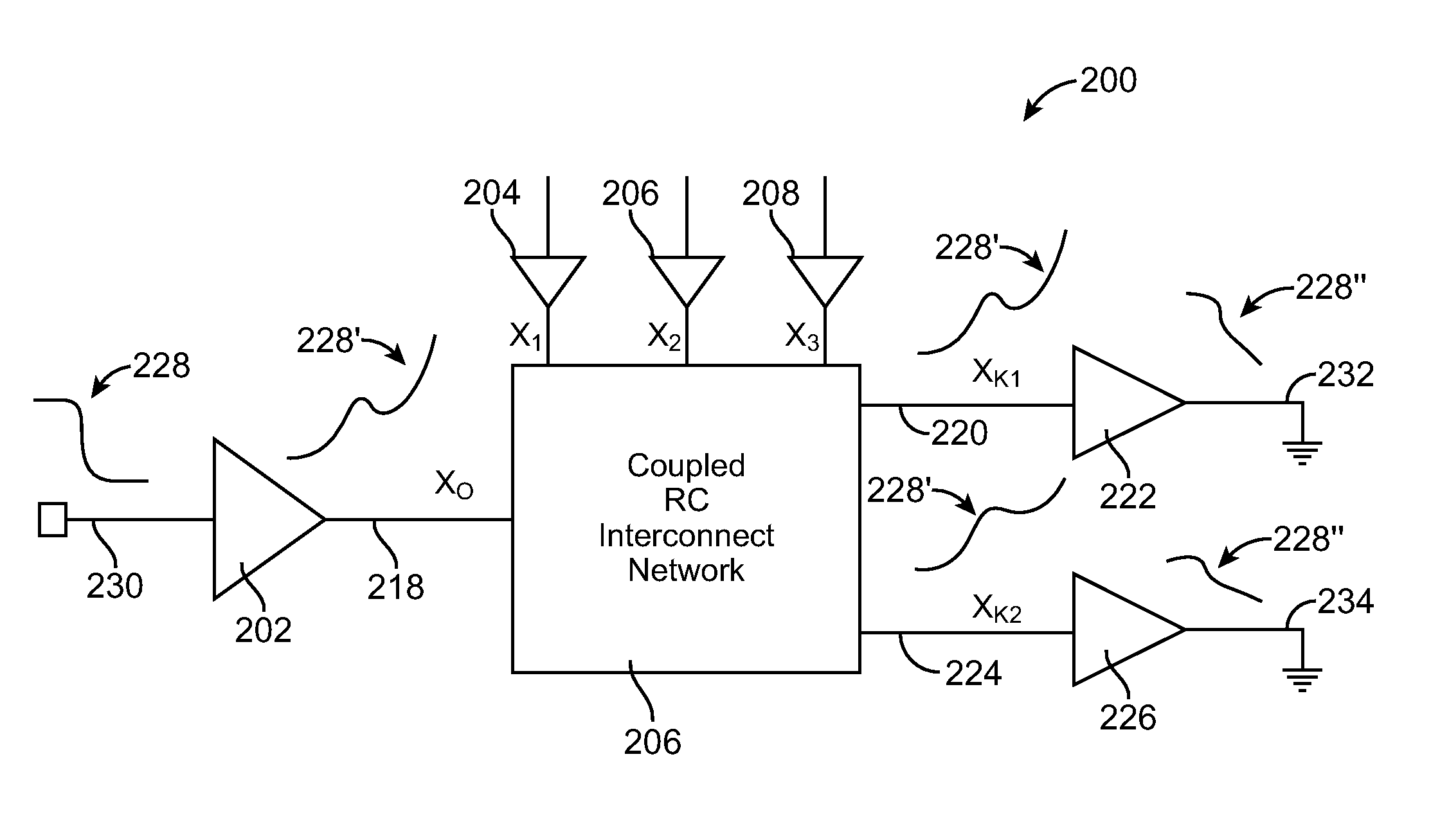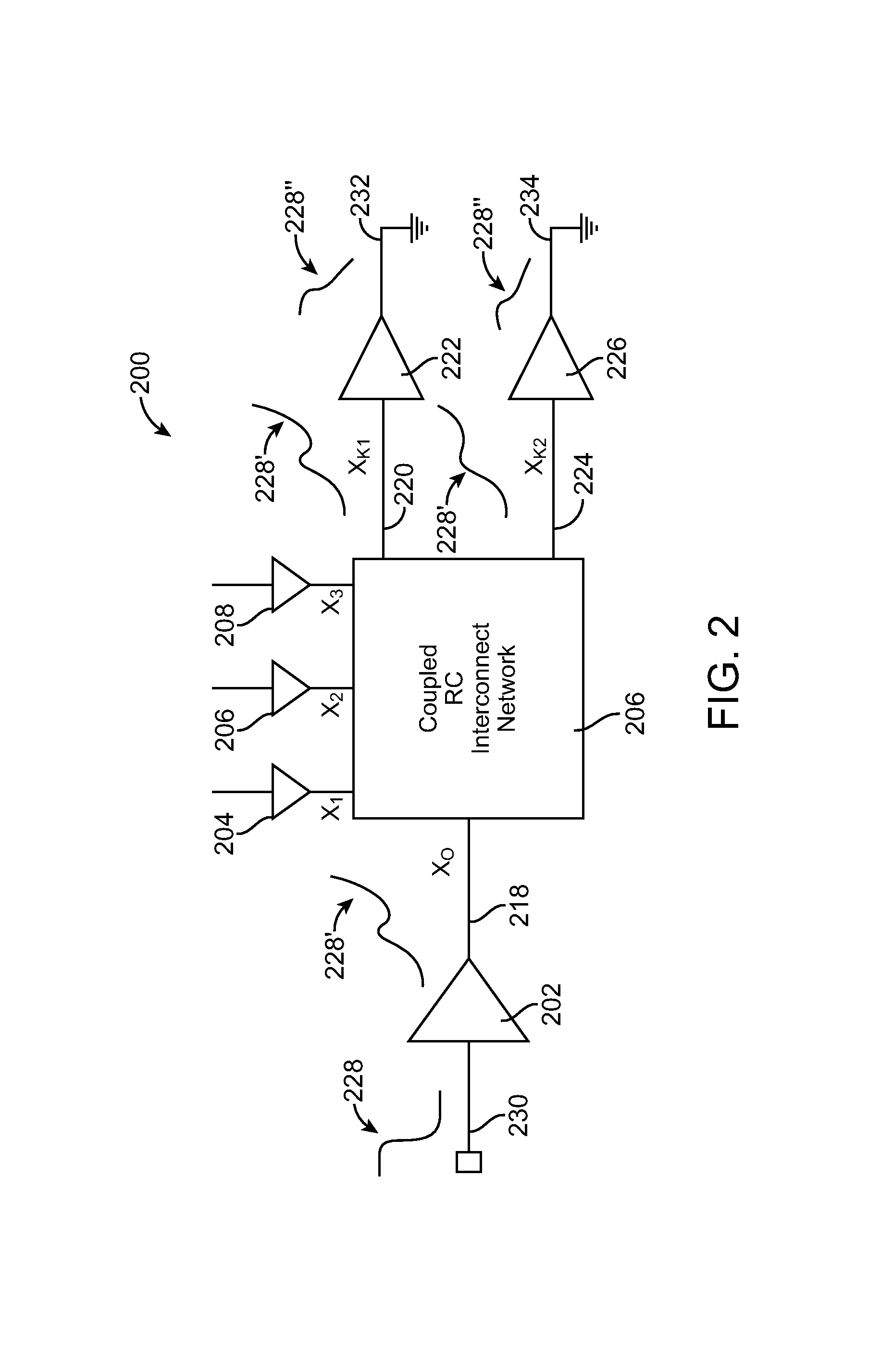Robust calculation of crosstalk delay change in integrated circuit design
a crosstalk delay and integrated circuit technology, applied in the field of integrated electronic circuit design and testing, can solve problems such as worse delay, and achieve the effects of reducing the number of errors
- Summary
- Abstract
- Description
- Claims
- Application Information
AI Technical Summary
Benefits of technology
Problems solved by technology
Method used
Image
Examples
case 3
[0148 indicates a severe delay and noise problem on the net: the noise glitch induced by switching aggressors after the victim's transition end propagates to the receiver output where it crosses 50% Vdd.
[0149]If the transition on the receiver output corresponding to the WC alignment is non-monotonic, a warning is issued as it might indicate a potential functional failure or a high inaccuracy of the delay analysis.
[0150]FIGS. 12A-12E illustrate an example of constrained alignment of four aggressor-induced victim waveforms (A1, A2, A3, A4) on a victim (VIC) for a maxrise delay change analysis in accordance with a present embodiment of the invention. Analogous alignments and delay change determinations can be performed for minrise, maxfall and minfall. In FIGS. 12A-12E, aggressor-induced victim net waveform alignment is constrained by aggressor switching windows (SW), which may not overlap with the nominal victim transition time. More specifically, FIGS. 12A-12E show a victim's noisy t...
PUM
 Login to View More
Login to View More Abstract
Description
Claims
Application Information
 Login to View More
Login to View More - R&D
- Intellectual Property
- Life Sciences
- Materials
- Tech Scout
- Unparalleled Data Quality
- Higher Quality Content
- 60% Fewer Hallucinations
Browse by: Latest US Patents, China's latest patents, Technical Efficacy Thesaurus, Application Domain, Technology Topic, Popular Technical Reports.
© 2025 PatSnap. All rights reserved.Legal|Privacy policy|Modern Slavery Act Transparency Statement|Sitemap|About US| Contact US: help@patsnap.com



